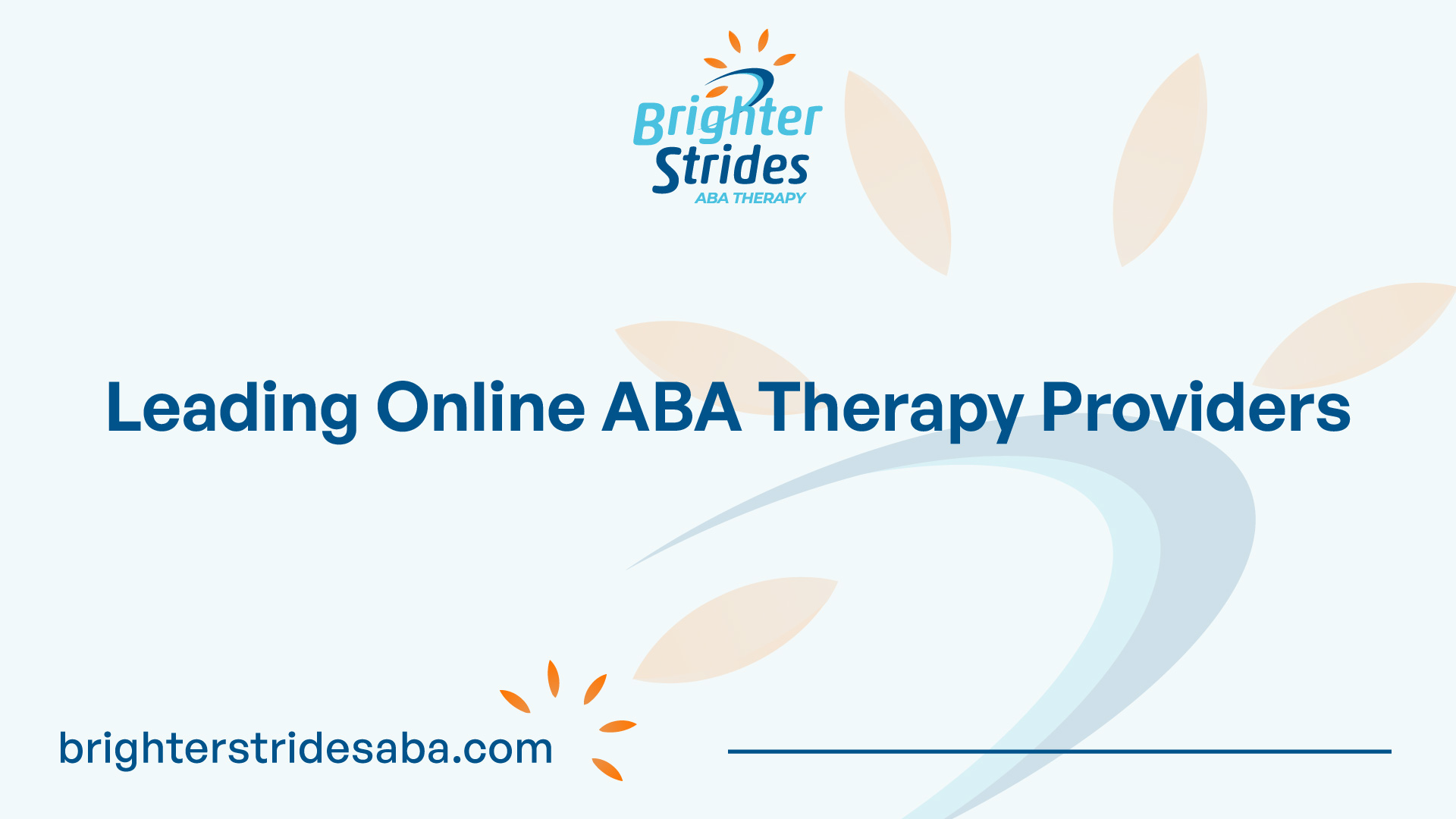
Understanding ABA Therapy
ABA therapy, also known as Applied Behavior Analysis Therapy, is a scientifically proven approach that focuses on understanding and modifying behavior. It is widely used to help individuals with autism spectrum disorder (ASD) and other developmental disabilities. ABA therapy utilizes various techniques and principles derived from the science of behavior analysis to improve socially significant behaviors [1].
ABA Therapy Overview
ABA therapy plays a crucial role in behavior analysis by providing a structured framework for understanding and modifying behavior. It emphasizes the use of evidence-based interventions and data-driven decision making to create meaningful changes in individuals’ lives. ABA therapy also places great importance on generalization, which involves applying learned skills across different settings, people, and situations, leading to greater independence and success in daily lives [1].
ABA therapy sessions are typically conducted by qualified professionals, such as Board Certified Behavior Analysts (BCBAs) and Registered Behavior Technicians (RBTs). These therapists work closely with individuals and their families to create individualized programs tailored to their specific needs and goals.
The techniques used in ABA therapy are based on the principles of behavior analysis. These principles include positive reinforcement, prompting, shaping, and fading. Positive reinforcement involves rewarding desired behaviors to increase their occurrence, while prompting, shaping, and fading techniques are used to teach new skills and gradually reduce the amount of assistance provided.
ABA therapy is highly individualized, taking into account the unique characteristics of each individual. It involves comprehensive assessments to identify target behaviors and collect baseline data. Based on this information, therapists develop intervention plans and implement strategies to address specific behaviors, such as communication, social skills, self-help skills, and academic skills.
ABA Therapy Benefits
ABA therapy has numerous benefits for individuals with autism spectrum disorder and other developmental disabilities. Some of the key benefits include:
- Improved Behavior: ABA therapy helps individuals acquire and strengthen adaptive behaviors while reducing challenging behaviors. It focuses on teaching new skills and replacing problem behaviors with appropriate alternatives.
- Enhanced Communication: ABA therapy targets communication skills, enabling individuals to express their needs, wants, and thoughts effectively. It may involve teaching verbal language, sign language, picture exchange communication systems, or augmentative and alternative communication devices.
- Social Skills Development: ABA therapy emphasizes the development of social skills, enabling individuals to engage in meaningful interactions with others. It includes teaching skills such as making eye contact, initiating conversations, sharing, taking turns, and understanding social cues.
- Independence and Daily Living Skills: ABA therapy helps individuals develop essential life skills necessary for independent living. This may include self-help skills like personal hygiene, dressing, feeding, and household chores.
- Academic Progress: ABA therapy can support academic development by targeting skills such as reading, writing, math, and problem-solving. It focuses on breaking down complex tasks into smaller, manageable steps to facilitate learning.
- Generalization of Skills: ABA therapy aims to generalize acquired skills across various settings, people, and situations. This promotes the application and maintenance of skills in real-life situations, leading to greater independence and success.
ABA therapy provides individuals with the tools and strategies they need to reach their full potential. By focusing on behavior change and skill-building, ABA therapy can have a positive and lasting impact on the lives of individuals with autism spectrum disorder and other developmental disabilities. To learn more about the impact of ABA therapy, visit our article on ABA therapy impact.
Transition to Virtual ABA Therapy
As technology continues to advance, the field of Applied Behavior Analysis (ABA) therapy has embraced the transition to virtual platforms. Virtual ABA therapy, also known as telehealth, offers numerous advantages and has become an increasingly popular option for individuals seeking therapy services. In this section, we will explore the advantages of virtual ABA therapy and compare it to traditional in-person therapy.
Virtual ABA Therapy Advantages
Virtual ABA therapy primarily focuses on parent training, problem-solving, reducing challenging behaviors, and increasing functional skills within the home environment, different from standard ABA therapy. Here are some of the advantages of virtual ABA therapy:
- Affordability and Accessibility: Online ABA therapy offers increased affordability and accessibility, allowing families to access therapy services from the comfort of their own homes [3]. This can be particularly beneficial for families with limited access to in-person therapy services or those who live in remote areas.
- Convenience: Virtual therapy sessions can be scheduled at convenient times, providing a flexible option for families with busy schedules. It eliminates the need for travel time, making therapy more accessible and efficient.
- Geographical Reach: Online ABA therapy breaks down geographical barriers, allowing individuals to receive therapy regardless of their location. This is especially advantageous for individuals residing in remote areas where accessing in-person therapy may be challenging [3].
- Individualized Care: Virtual ABA therapy offers individualized care plans tailored to meet the specific needs of each individual. The therapy process includes consultation, initial evaluation, case assessment, development of ABA therapy, and supervision and monitoring, mirroring the face-to-face therapy process [2].
Virtual vs. Traditional ABA Therapy
While virtual ABA therapy offers numerous advantages, it’s important to consider the differences between virtual and traditional in-person therapy. Here are some key points to consider:
- Social Interaction: In-person therapy sessions provide face-to-face interactions with therapists and peers, promoting social skills development and the opportunity to learn from others in a group setting. Virtual ABA therapy may lack this sense of community, which can impact the social aspect of therapy [3].
- Environmental Control: Traditional ABA therapy allows therapists to directly control the therapy environment, ensuring minimal distractions and optimal conditions for learning. Virtual ABA therapy relies on the home environment, which may introduce additional distractions and challenges that need to be managed effectively.
- Hands-On Assistance: In-person therapy allows therapists to provide hands-on assistance and physical prompts when necessary. Virtual ABA therapy requires the involvement of parents or caregivers to implement the therapy strategies under the guidance of the therapist.
- Equipment and Materials: Traditional therapy settings are equipped with various materials and resources that facilitate learning and skill acquisition. Virtual ABA therapy requires families to have access to appropriate materials and technology to effectively participate in the therapy sessions.
By understanding the advantages of virtual ABA therapy and considering the differences between virtual and traditional therapy, individuals and families can make informed decisions about the most suitable approach for their specific needs. The transition to virtual ABA therapy has opened up new possibilities, providing convenient and accessible options for individuals seeking therapy services.

Leading Online ABA Therapy Providers
When it comes to accessing ABA therapy online, several leading providers offer comprehensive resources and services. These online platforms aim to deliver effective and convenient ABA therapy to individuals in need. Let’s explore three prominent online ABA therapy providers:
AllDayABA Resources
AllDayABA is a website that offers valuable resources for ABA therapists. Their platform provides access to informative blog posts, useful tools, and information about upcoming projects. ABA therapists can benefit from the wealth of knowledge shared on AllDayABA, helping them stay updated with the latest developments in the field and enhance their practice. For ABA therapists seeking additional support and professional growth, AllDayABA is a valuable resource. You can explore their offerings on their website.
Attain ABA Virtual Therapy
Attain ABA offers a virtual ABA therapy program that focuses primarily on parent training, problem-solving, reducing challenging behaviors, and increasing functional skills within the home environment. Their virtual therapy services provide a unique approach to ABA therapy, different from traditional in-person sessions. By leveraging technology, Attain ABA aims to overcome barriers to access and provide flexible therapy options to families. To learn more about Attain ABA’s virtual ABA therapy services, visit their website.
Early Autism Services Telehealth
Early Autism Services is another leading provider that offers telehealth ABA therapy services. Through telehealth, children can receive personalized ABA therapy services through electronic devices, allowing them to receive therapy without disrupting their routine. Early Autism Services focuses on providing effective and individualized services to support the unique needs of each child and their family. To explore their telehealth therapy services and the benefits they offer, you can visit their website.
By partnering with these leading online ABA therapy providers, individuals and families can access quality ABA therapy services, resources, and support from the comfort of their own homes. These platforms offer innovative approaches to ABA therapy and contribute to the accessibility and effectiveness of ABA services for individuals who may not have easy access to traditional in-person sessions.
Effectiveness of Online ABA Therapy
When it comes to providing effective therapy for individuals with Autism Spectrum Disorder (ASD), online ABA therapy has emerged as a valuable option. Research has shown that online ABA therapy can be as effective as in-person therapy in achieving positive outcomes for individuals with ASD. In fact, participants in a study demonstrated mastery and maintenance of targeted skills solely through telehealth direct therapy, highlighting the efficacy of online ABA therapy in delivering ABA services and supporting skill development.
Research Findings
A study evaluated the efficacy of telehealth direct therapy in teaching new skills to individuals with ASD during the COVID-19 pandemic. The study utilized natural environment teaching and discrete trial training strategies over a videoconferencing platform. The results were promising, with all seven participants demonstrating mastery and maintenance for all targets. This suggests that telehealth is an effective modality for teaching new skills to individuals with varying levels of ASD severity [4].
Online ABA therapy significantly improves accessibility to therapy services. It eliminates geographical limitations, allowing individuals to access therapy regardless of their location. This is particularly beneficial for individuals living in remote areas or areas with limited access to ABA therapy services [5]. With the ability to access therapy from anywhere, individuals can receive the support they need to improve their behavior, communication skills, and overall development.
Success Stories
Many individuals and families have experienced positive outcomes through online ABA therapy. The convenience and accessibility of online therapy have allowed individuals to make progress in their treatment goals. By receiving therapy in the comfort of their own homes, individuals can feel more relaxed and engaged during sessions, leading to better outcomes.
Online ABA therapy has also proven to be effective in maintaining progress and generalization of skills. The ability to incorporate therapy into daily routines and natural environments helps individuals apply learned skills in real-life situations. This has been particularly beneficial for individuals with ASD, as generalization of skills can be challenging.
By utilizing online ABA therapy, individuals with ASD have been able to make significant strides in areas such as communication, social skills, behavior management, and independence. The accessibility and effectiveness of online ABA therapy have transformed the way therapy is delivered, providing individuals with ASD the opportunity to reach their full potential.
As online ABA therapy continues to evolve and improve, it holds great promise for the future of therapy for individuals with ASD. The convenience, accessibility, and effectiveness of online therapy make it an invaluable resource for individuals seeking ABA services. By harnessing the potential of online ABA therapy, individuals with ASD can receive the support they need to thrive and succeed.

Online Resources for ABA Therapy
When seeking information and support for ABA therapy, there are several online resources available to guide individuals and families on their journey. These resources provide valuable information, research, and support networks to enhance the effectiveness of ABA therapy. Here are a few notable online resources:
Autism Speaks Guide
Autism Speaks is a well-known organization that offers a comprehensive resource guide for ABA therapy and other autism-related topics. Their guide provides information on ABA therapy providers, state-specific resources, and a list of apps focused on communication and social skills [6]. This guide is a valuable tool for parents looking for information and support for their child’s ABA therapy journey.
Autism Research Institute
The Autism Research Institute (ARI) focuses on researching the causes of autism and developing safe and effective treatments for individuals affected by the disorder. Their website offers a wealth of information on ABA therapy and other evidence-based treatments. Through their research findings and educational resources, ARI provides valuable insights and support for individuals, families, and professionals involved in ABA therapy.
Additional Supportive Websites
In addition to Autism Speaks and the Autism Research Institute, there are several other online resources that offer support and information for ABA therapy:
- AutismWeb: Managed by parents, AutismWeb provides insights on various autism teaching methods and serves as a platform for parents to share stories, updates on children’s progress, and useful recipes for picky eaters [6].
- Autism Highway: Founded by a mother of an autistic child, Autism Highway is an informative and entertaining website that lists autism-related events and specialists. It also offers fun games for children, making it an engaging resource for families seeking support and information [6].
- Healing Thresholds: Providing information on various therapy treatments for children with autism, Healing Thresholds focuses on the top 12 therapies used by parents. Additionally, it offers insights on nearly 100 additional therapies, giving families a comprehensive view of available treatment options [6].
These online resources offer a wealth of information, research, and support for individuals and families considering or already engaged in ABA therapy. By utilizing these resources, individuals can access valuable insights, stay informed about the latest research, and connect with a supportive community.
Future of ABA Therapy
As technology continues to advance, the future of ABA therapy holds promising possibilities. One of the key developments in recent years has been the integration of telehealth innovations into the field of ABA therapy. This shift towards telehealth has revolutionized the way therapeutic services are delivered, offering new opportunities and benefits for both clinicians and clients.
Telehealth Innovations
Telehealth refers to the use of technology to provide healthcare services remotely, allowing clinicians and clients to connect even when they are physically apart. The U.S. Department of Health and Human Services facilitated the use of telehealth during the COVID-19 pandemic, leading to increased coverage of telehealth services by payors [4].
In the context of ABA therapy, telehealth has opened up new avenues for delivering effective treatment to individuals with autism spectrum disorder (ASD) and other developmental disabilities. Through videoconferencing and other technologies, clinicians can provide therapy sessions in real-time, allowing for direct interaction and observation. This enables therapists to assess and address specific behaviors and skills, just as they would in traditional in-person sessions.
Telehealth innovations in ABA therapy also include asynchronous services, where clinicians can review data and provide feedback without the client being present. This flexibility allows for increased convenience and accessibility, particularly for individuals who may have difficulty attending in-person sessions due to geographical constraints or other limitations.
Long-Term Impact
The long-term impact of telehealth on ABA therapy is still being researched and explored. However, initial studies have shown promising outcomes. Research on telehealth direct therapy for individuals with intellectual and developmental disabilities, including ASD, has demonstrated positive gains in at least one dependent variable in 100% of the reviewed studies, with favorable outcomes in 61% of the studies [4].
A study evaluating the effects of transitioning from in-person services to telehealth direct therapy for individuals with ASD found that participants maintained similar doses of treatment hours per week and maintained or improved their correct independent responding across all targets. These findings suggest that telehealth can be an effective and reliable method for delivering ABA therapy.
While telehealth innovations have proven beneficial, it is important to note that in-person sessions may still be necessary in certain cases, especially for individuals who require hands-on support or physical guidance. A combination of in-person and telehealth sessions may provide the optimal balance for individualized ABA therapy programs.
As technology continues to evolve and improve, the future of ABA therapy holds promise for even more innovative solutions. These advancements have the potential to enhance the accessibility, convenience, and effectiveness of ABA therapy, ultimately leading to improved outcomes for individuals with autism and other developmental disabilities.

 We've just released an article!
Check out our blog!
We've just released an article!
Check out our blog!



